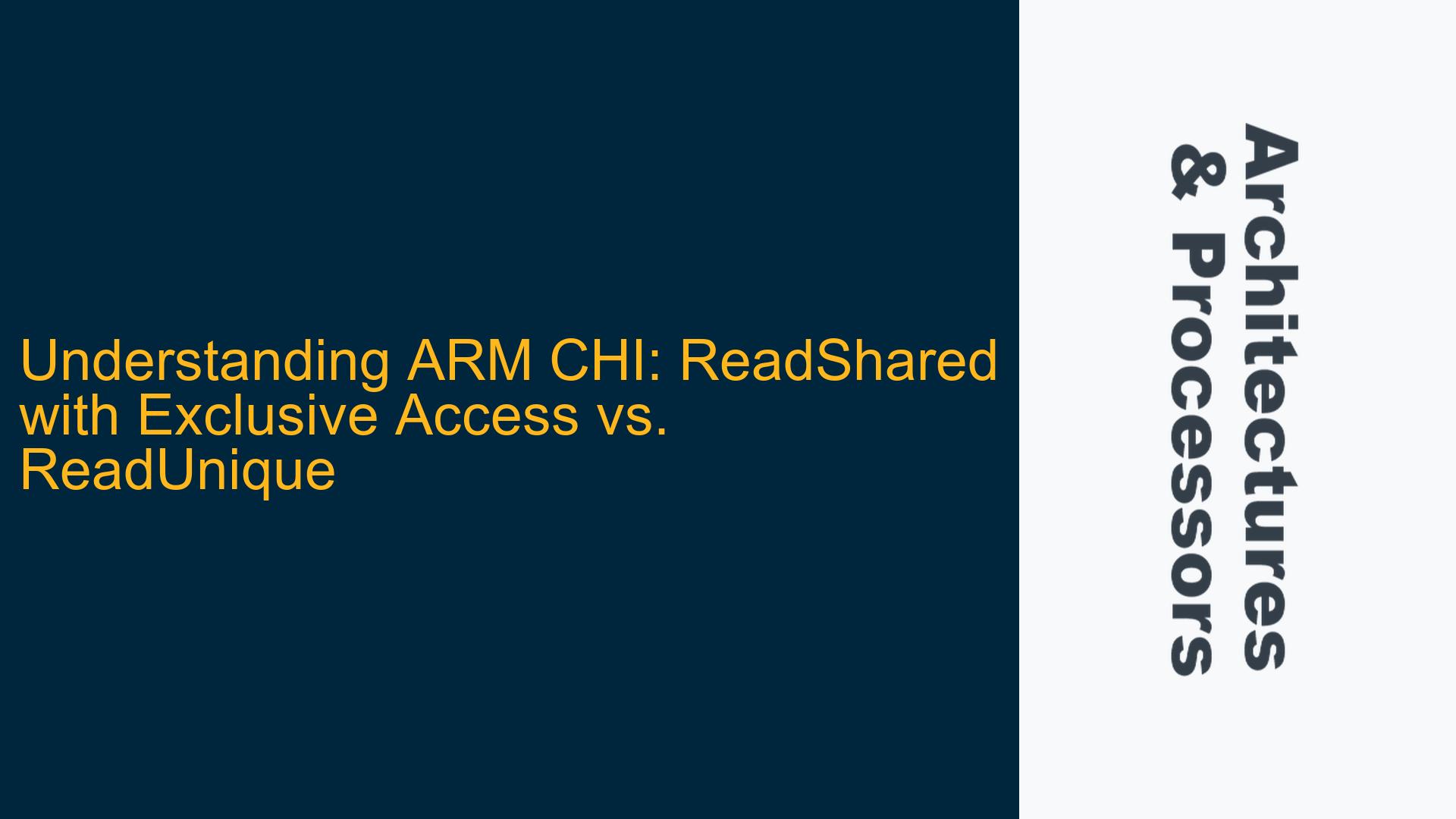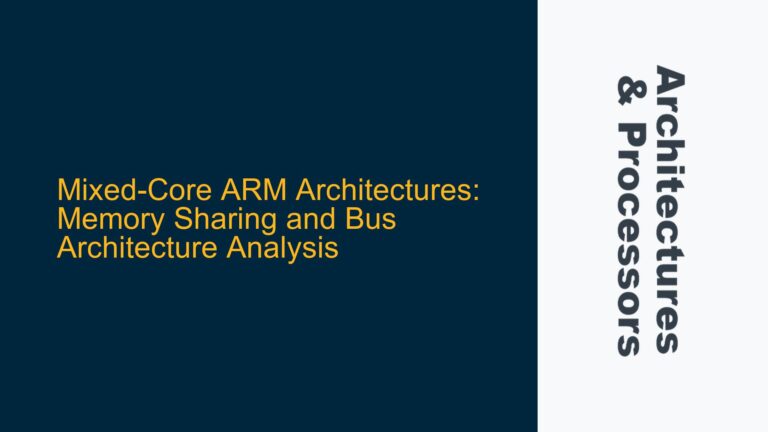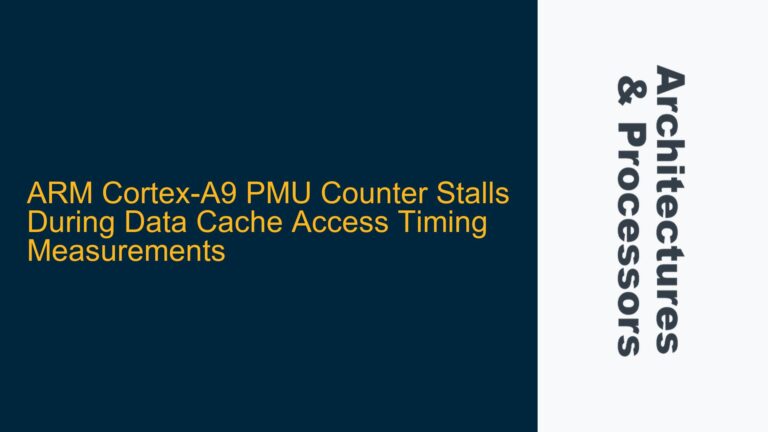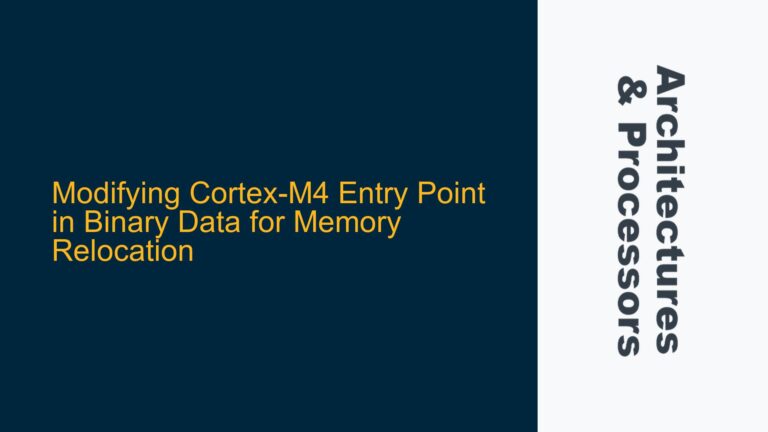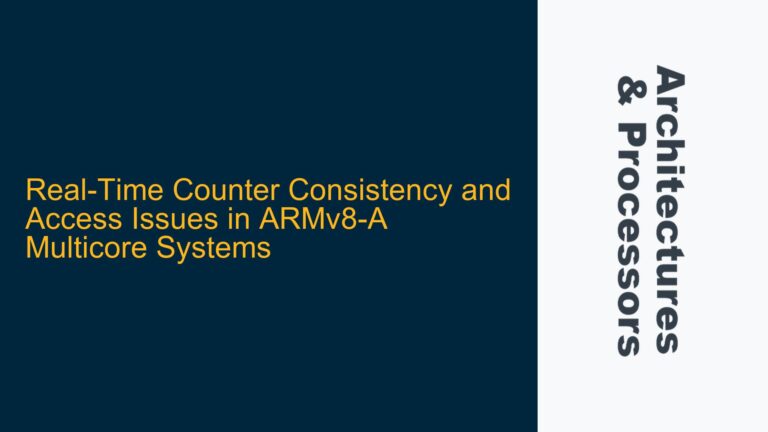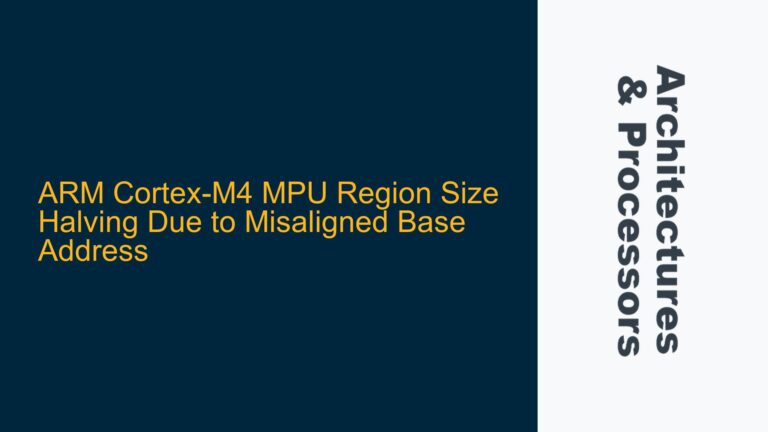ARM CHI ReadShared with Exclusive Access and ReadUnique: Key Differences and Use Cases
The ARM Coherent Hub Interface (CHI) specification defines a set of protocols and transactions for managing coherence and data transfers in multi-core systems. Among these transactions, ReadShared with Exclusive Access and ReadUnique are two critical operations that serve distinct purposes in managing memory access and synchronization. While both transactions are used to read data with the intention of modifying it, their underlying mechanisms, use cases, and implications for system performance and synchronization differ significantly. This post delves into the technical nuances of these transactions, their roles in ARM architectures, and how they influence system behavior.
ARM Cortex-M4 Cache Coherency Problems During DMA Transfers
The primary distinction between ReadShared with Exclusive Access and ReadUnique lies in their handling of cache coherency and synchronization. ReadShared with Exclusive Access is designed to initiate an exclusive sequence, which is a read-modify-write (RMW) operation that ensures atomicity and mutual exclusion. This sequence is critical for implementing synchronization primitives such as semaphores and locks. On the other hand, ReadUnique is used to obtain a unique copy of a cache line, enabling the requester to modify the data without the need for synchronization.
The exclusive sequence initiated by ReadShared with Exclusive Access involves two key steps: a load-exclusive (LDXR) operation and a store-exclusive (STXR) operation. The load-exclusive operation fetches the data in a shared state but marks the cache line as being part of an exclusive sequence. The store-exclusive operation attempts to write back the modified data, but it will only succeed if no other requester has modified the cache line in the interim. If the store-exclusive operation fails, the sequence must be restarted, ensuring that the RMW operation remains atomic.
In contrast, ReadUnique bypasses the need for an exclusive sequence by directly fetching the cache line in a unique state. This allows the requester to modify the data without worrying about concurrent modifications from other requesters. However, this approach does not provide the same level of synchronization as an exclusive sequence, making it unsuitable for implementing locks or semaphores.
The choice between these two transactions depends on the specific requirements of the application. If synchronization is required, ReadShared with Exclusive Access is the appropriate choice. If synchronization is not required, ReadUnique provides a more efficient mechanism for obtaining a unique copy of the data.
Memory Barrier Omission and Cache Invalidation Timing
One of the key challenges in using ReadShared with Exclusive Access and ReadUnique is ensuring proper cache coherency and avoiding race conditions. This requires careful management of memory barriers and cache invalidation timing.
In the case of ReadShared with Exclusive Access, the exclusive sequence relies on the Home Node to track the status of the cache line. When a requester initiates an exclusive sequence, the Home Node marks the cache line as being part of an exclusive sequence. If another requester attempts to modify the cache line during this period, the Home Node will invalidate the cache line, causing the store-exclusive operation to fail. This mechanism ensures that the exclusive sequence remains atomic, but it also introduces additional latency and complexity.
ReadUnique, on the other hand, does not require the same level of coordination with the Home Node. Since the cache line is fetched in a unique state, the requester can modify the data without worrying about concurrent modifications. However, this approach assumes that no other requester will attempt to modify the cache line during the operation. If this assumption is violated, it can lead to data corruption and undefined behavior.
To mitigate these risks, developers must use memory barriers and cache management instructions to ensure that the cache line is in the correct state before performing a write operation. For ReadShared with Exclusive Access, this involves using data synchronization barriers (DSB) and instruction synchronization barriers (ISB) to ensure that the exclusive sequence is executed atomically. For ReadUnique, developers must ensure that the cache line is invalidated and fetched in a unique state before performing the write operation.
Implementing Data Synchronization Barriers and Cache Management
To effectively use ReadShared with Exclusive Access and ReadUnique, developers must implement a robust cache management strategy that includes data synchronization barriers and proper cache invalidation timing.
For ReadShared with Exclusive Access, the following steps are recommended:
- Initiate the Exclusive Sequence: Use the load-exclusive (LDXR) instruction to fetch the data in a shared state and mark the cache line as being part of an exclusive sequence.
- Perform the Modification: Modify the data in the cache line as required by the application.
- Execute the Store-Exclusive Operation: Use the store-exclusive (STXR) instruction to attempt to write back the modified data. If the operation fails, restart the sequence.
- Use Data Synchronization Barriers: Insert data synchronization barriers (DSB) and instruction synchronization barriers (ISB) to ensure that the exclusive sequence is executed atomically.
For ReadUnique, the following steps are recommended:
- Fetch the Cache Line in Unique State: Use the ReadUnique transaction to fetch the cache line in a unique state, ensuring that no other requester can modify the data.
- Perform the Modification: Modify the data in the cache line as required by the application.
- Write Back the Modified Data: Use a standard write operation to write back the modified data.
- Invalidate the Cache Line: If necessary, invalidate the cache line to ensure that other requesters do not access stale data.
By following these steps, developers can ensure that their applications use ReadShared with Exclusive Access and ReadUnique effectively, minimizing the risk of data corruption and race conditions.
Performance Implications and Optimization Strategies
The choice between ReadShared with Exclusive Access and ReadUnique has significant implications for system performance. ReadShared with Exclusive Access introduces additional latency due to the need for coordination with the Home Node and the potential for failed store-exclusive operations. However, it provides a robust mechanism for implementing synchronization primitives, making it essential for multi-threaded applications.
ReadUnique, on the other hand, provides a more efficient mechanism for obtaining a unique copy of the data, but it does not provide the same level of synchronization. This makes it suitable for applications where synchronization is not required, but it also increases the risk of data corruption if the cache line is modified by another requester.
To optimize performance, developers should carefully analyze the requirements of their application and choose the appropriate transaction based on the need for synchronization. For applications that require frequent synchronization, ReadShared with Exclusive Access is the preferred choice. For applications that do not require synchronization, ReadUnique provides a more efficient alternative.
Additionally, developers should consider using prefetch-for-store (PRFM PST) instructions to prepare cache lines for modification. These instructions fetch the cache line in a unique state, reducing the latency associated with ReadUnique transactions. By combining these strategies, developers can optimize the performance of their applications while ensuring data integrity and synchronization.
Conclusion
The ARM CHI specification provides a powerful set of tools for managing cache coherency and synchronization in multi-core systems. ReadShared with Exclusive Access and ReadUnique are two critical transactions that serve distinct purposes in this context. While ReadShared with Exclusive Access is essential for implementing synchronization primitives, ReadUnique provides a more efficient mechanism for obtaining a unique copy of the data. By understanding the differences between these transactions and implementing robust cache management strategies, developers can optimize the performance and reliability of their applications.
